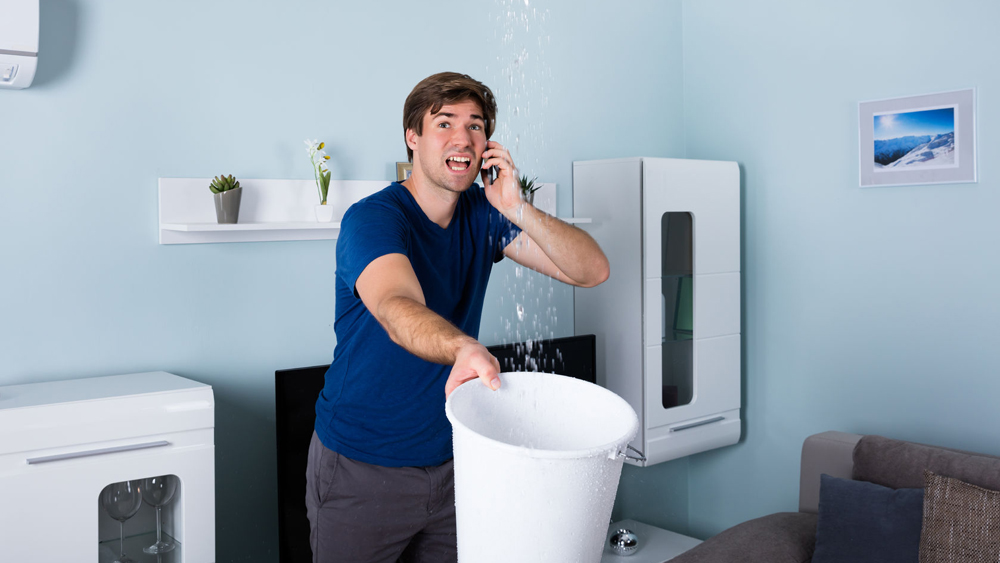Six Factors Behind Common Water Leaks in Homes and How to Fix Them
Six Factors Behind Common Water Leaks in Homes and How to Fix Them
Blog Article
We've stumbled upon this post about How to Find Water Leaks listed below on the web and decided it made good sense to share it with you on my blog.

Leaks not just cause waste of water yet can also create unnecessary damages to your house and advertise unwanted organic development. By understanding and also looking for day-to-day situations that trigger leaks, you can secure your home from future leakages and unneeded damage.
Elbowing in origins
Many water leakages start outside your house rather than inside it. If you see a sudden decrease in water stress, claim in your tap, require time to go out and also examine your backyard. You might see wet spots or sinkholes in your backyard, and that could mean that tree origins are invading water lines triggering water to seep out. You can have your plumber check for intrusion, specifically if you have trees or bushes near your property.
Rusty water supply
This may be the cause of staining or warping on your water pipes. If our plumbing system is old, take into consideration changing the pipelines since they are at a higher danger of deterioration than the newer designs.
Faulty Pipe Joints
Pipeline joints can degrade over time, resulting in water leakages. If you have noisy pipes that make ticking or banging noises, specifically when the warm water is turned on, your pipe joints are probably under a whole lot of stress.
Immediate temperature changes.
Severe temperature modifications in our pipes can create them to broaden and get suddenly. This expansion and also tightening might trigger cracks in the pipelines, particularly if the temperature level are below cold.
Poor Water Connectors
At times, a leakage can be caused by loosened tubes and pipes that supply your home appliances. In case of a water links leak, you may discover water running directly from the supply line or puddles around your appliances.
Blocked Drains
Obstructed drains might be frustrating and inconveniencing, however they can sometimes end up triggering an overflow leading to burst pipelines. Maintain eliminating any products that might drop your drains pipes that could obstruct them to prevent such troubles.
All the above are sources of leakages but not all water leaks arise from plumbing leakages; some leaks could come from roofing leakages. All leaks need to be repaired quickly to prevent water damage.
Leakages not just create waste of water but can additionally cause unnecessary damage to your home and promote unwanted natural growth. By looking as well as comprehending for day-to-day circumstances that cause leakages, you can protect your house from future leakages and unneeded damage. Today, we will certainly look at six leakage creates that may be triggering your pipelines to trickle.
At times, a leakage can be triggered by loosened hose pipes as well as pipes that provide your home appliances. In case of a water links leakage, you may see water running directly from the supply line or puddles around your devices.
How To Check For Water Leak In Your Home
How To Check for Leaks
The average household's leaks can account for nearly 10,000 gallons of water wasted every year and ten percent of homes have leaks that waste 90 gallons or more per day. Common types of leaks found in the home are worn toilet flappers, dripping faucets, and other leaking valves. These types of leaks are often easy to fix, requiring only a few tools and hardware that can pay for themselves in water savings. Fixing easily corrected household water leaks can save homeowners about 10 percent on their water bills.
To check for leaks in your home, you first need to determine whether you're wasting water and then identify the source of the leak. Here are some tips for finding leaks:
Take a look at your water usage during a colder month, such as January or February. If a family of four exceeds 12,000 gallons per month, there are serious leaks.
Check your water meter before and after a two-hour period when no water is being used. If the meter changes at all, you probably have a leak.
Identify toilet leaks by placing a drop of food coloring in the toilet tank. If any color shows up in the bowl after 10 minutes, you have a leak. (Be sure to flush immediately after the experiment to avoid staining the tank.)
Examine faucet gaskets and pipe fittings for any water on the outside of the pipe to check for surface leaks.
Undetected water leaks can happen without the home or business owner even realizing. If you suspect a water leak, but not able to find the source. It is time to contact a professional water leak detection service, The Leak Doctor.
How To Find a Water Leak In Your Home
https://www.leakdoctor.com/blog/How-To-Check-For-Water-Leak-In-Your-Home_AE197.html

As a keen person who reads on Common Water Leaks In House, I was thinking sharing that piece of content was beneficial. Sharing is caring. Helping people is fun. I appreciate reading our article about How to detect water leaks in your home.
Book A Free Estimate Report this page